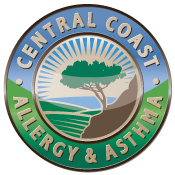The information on this page is provided is a resource for those who suffer from allergies. Daily pollen counts change frequently, this page can be used to help those who are effected by pollen plan their activities and prepare accordingly.
FAQ
What are pollens and molds?
Pollen is a microscopic reproductive cell released by the male section of a flowering plant. Tree, grass, and weed pollens are light and powdery in composition and can be carried great distances by the wind. Fungal or mold spores are also responsible for causing allergic suffering. Fungi reproduce largely by the release of spores. The fungi are prevalent in dark, damp places like soil, and piles of rotting wood and vegetation, especially where field crops are cultivated. When the spores are dispersed, they become airborne, causing allergic reactions. Fungal spores are present year round but can increase after rains or plowing of the fields.
What is a pollen and mold counter?
Under the direction of Dr. Steven S. Prager, at Central Coast Allergy & Asthma, a Burkard pollen and spore counter has been installed at the Natividad Medical Center. With the placement of this pollen counter, the types and levels of different pollens and molds in the Salinas Valley are being analyzed and reported on a weekly basis. The Burkard counter uses air samplings to capture air-borne pollens and molds. These samples are then evaluated and counted by a specialist who is certified by the Harvard School of Public Health.
The National Allergy Bureau™ (NAB™) is the section of the American Academy of Allergy, Asthma and Immunology's (AAAAI) Aeroallergen Network. The Salinas pollen station will join a system of over 75 pollen and spore counting stations nationwide. This information will be made available to the media, by request, and the public free of charge.
Local counts & graphs are usually updated weekly.
Click on the links below for information.- Specific pollens & molds in the air
- Pollen & mold graphs
- Information about local pollens
- National pollen counts (National Allergy Bureau)
Pollen & Mold Counting is courtesy of:
Central Coast Allergy & Asthma, The American Academy of Allergy, Asthma & Immunology and the Center for Health Assessment of Mothers and Children of Salinas (CHAMACOS).
